How to Choose a Wilderness Campsite
Where to Camp
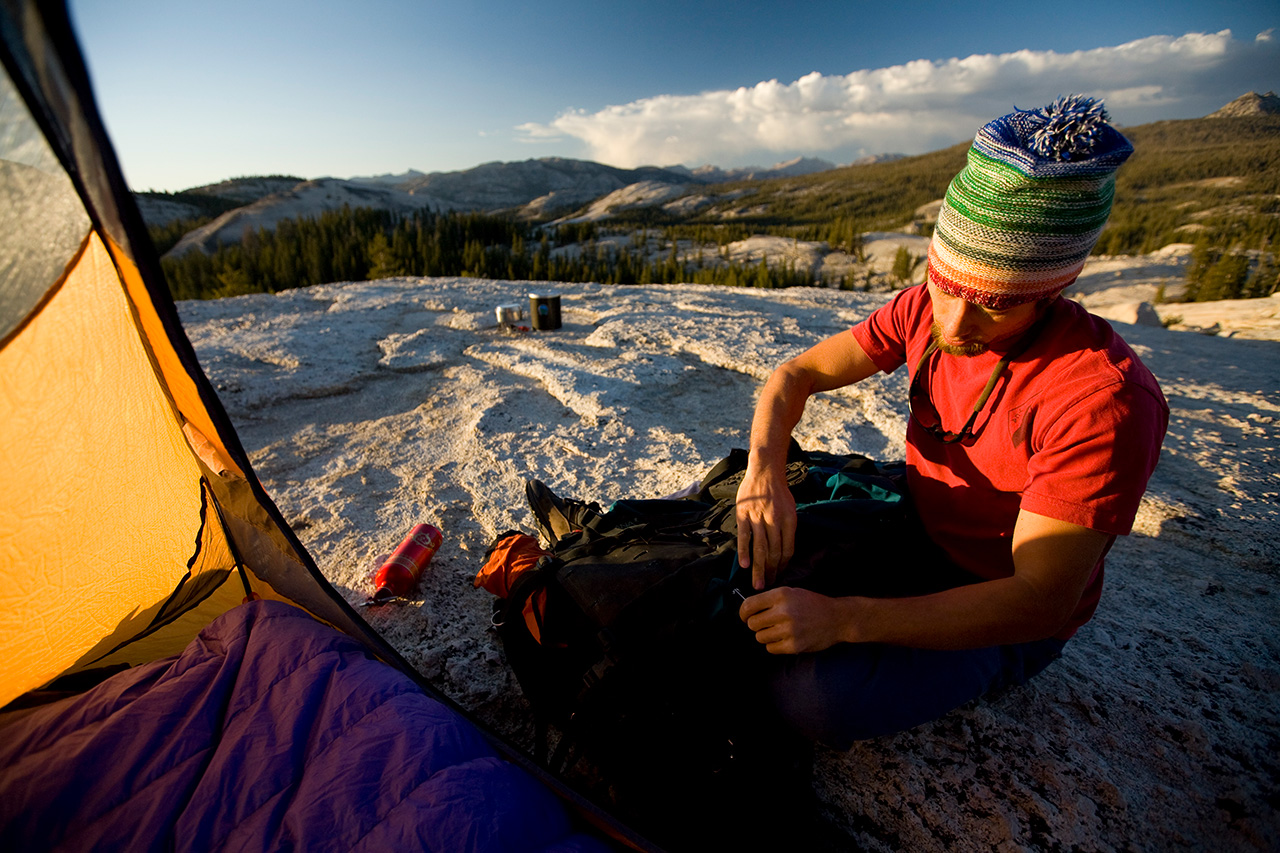
As a wilderness visitor, it's your responsibility to choose legal and low impact campsites. Check the rules and regulations for the wilderness you want to visit to determine what type of camping, and thus what type of campsite, you should look for.
Unregulated Camping
Unless specific rules exist regarding camping, you can generally camp wherever you’d like. In areas where this type of camping is allowed, you should do your best to choose campsites that meet all of these guidelines:
- Use well-established campsites, meaning that others have camped there, and the site is large enough for your group
- If well-established campsites aren't available or you are in a seldom-used area, chose campsites that are:
- Located on rock, gravel, bare soil or other durable surfaces
- Without bushes or other vegetation
- Not near dead and hazardous trees or branches that could fall on you
- At least 200 feet (70 adult paces) away from water, trails, and other campsites (this distance is often called a camping setback)
Observing camping setbacks from water protects water quality and provides access for wildlife, fishermen, and other day-use visitors. Camping away and out-of-sight from trails and other campsites protects everyone's solitude and natural quiet and avoids the potential for crowding and conflicts.
Avoid creating a new campsite or using a lightly-impacted or closed campsite. Instead, allow these to recovery. Even a single night of use can stop or rewind recovery.
Restrict all camping activities to your campsite’s core barren/most durable area. If the site is too small to allow this, then split up your group and use more than one campsite. Enlarging an existing campsite by trampling plants around the edges means this site gets bigger over time and becomes more likely to be closed for restoration.
In more popular areas, managers may recommend or require you to existing well-established campsites, which may be marked on maps, have paint blazes or small signs, or be included in smartphone apps that you can use to find them. Sometimes established sites may be near other campsites that are less sustainable, violate camping setbacks, or are closed for recovery, so be sure you choose one of the established sites and avoid others.
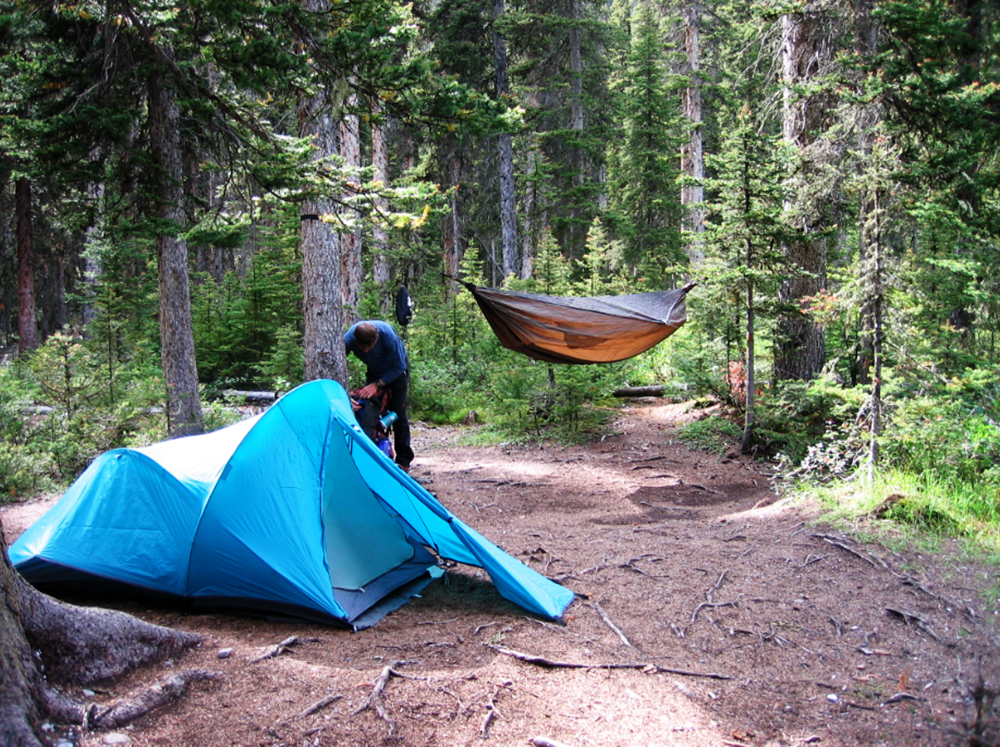
Regulated or Designated Site Camping
In the most popular areas, you may be required to choose only from carefully-selected designated campsites for which you may need a permit and/or reservation to ensure you camp at a specific campsite on a specific night. If permits or reservations are required, you will need to obtain these online or at a ranger station in advance (check to see how and where). If you are on a multi-day trip, this also means that you must plan and adhere to your trip itinerary to ensure you camp only at the designated site on the night of your reservation or permit. If designated sites are first-come-first-serve, you should arrive early to ensure you get a site or have enough time to travel to a different area if there are no available sites. Designated sites, like the one below, may have camping posts or a steel fire ring to clearly identify them. Camping in any nearby non-designated site is likely to result in a ticket and fine.
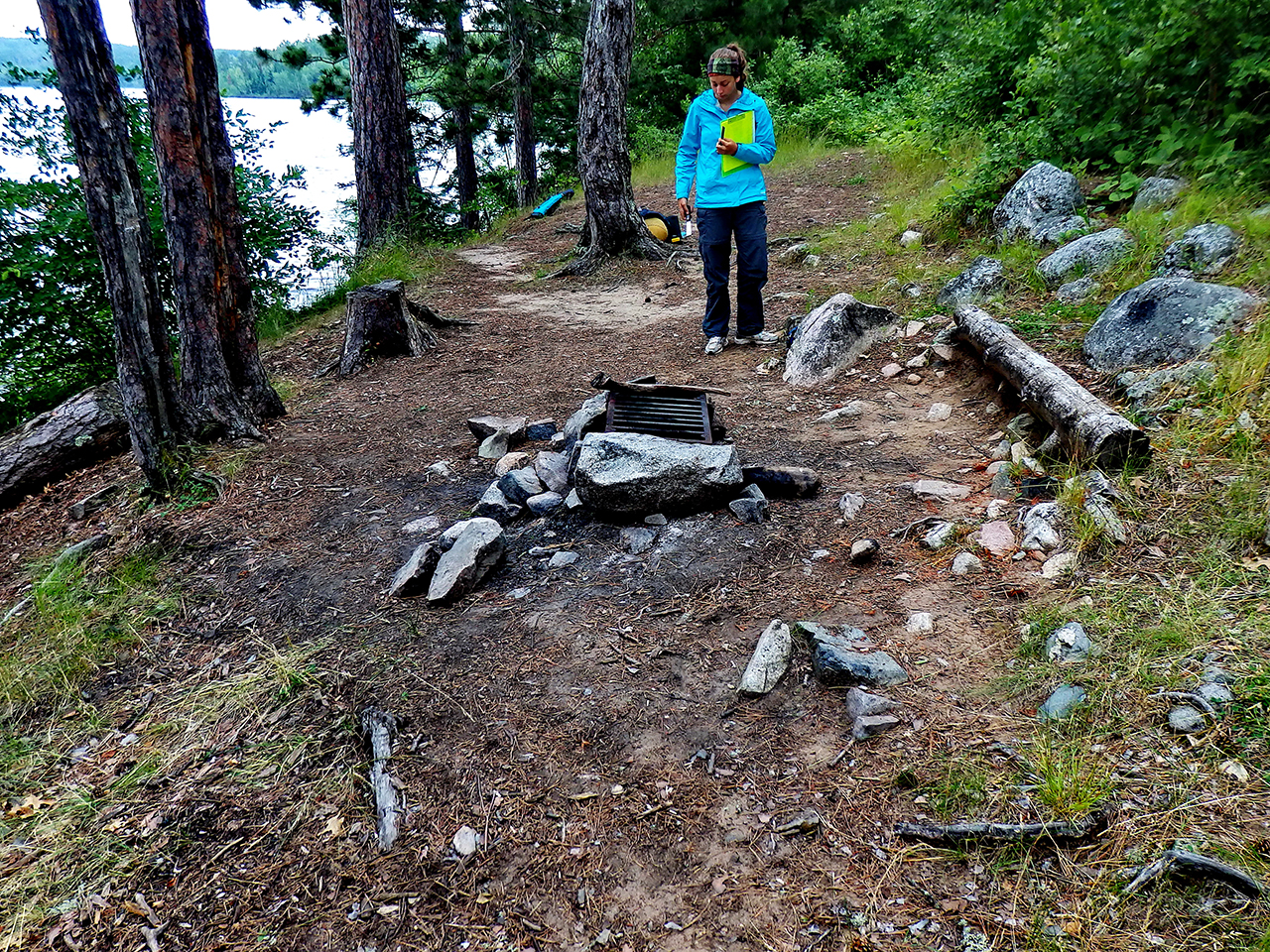
Remote Camping - Being Invisible
Camping in remote areas offers a unique wilderness experience, but is best suited for more experienced campers in low-use wilderness areas. Choose this option only if you can do it successfully. For this option, select a durable area out-of-sight from trails, water, and other campsites that shows no prior human disturbance. Camp a single night, and avoid lasting vegetative disturbance (e.g. no campfires). Then, make sure all evidence of your visit is invisible by restoring the site before departing so that others will not find and reuse it. Depending on the weather, hammocks may be a better shelter choice than tents for this style of camping because they minimize the trampling of plants that occurs when tent camping. But be sure you're fully versed on hammock camping basics. A failure to fully apply these steps can result in the creation of a brand new campsite, which significantly expands the total environmental impact caused by your visit.
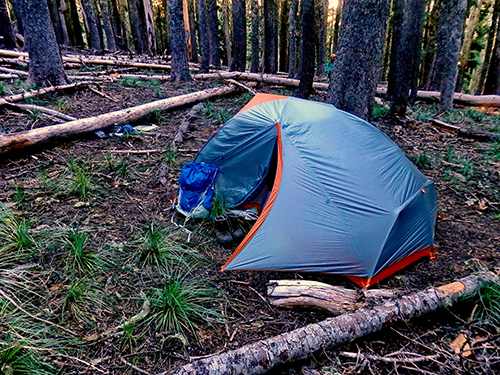
This tent is located in a durable area with no evidence of previous human disturbance.
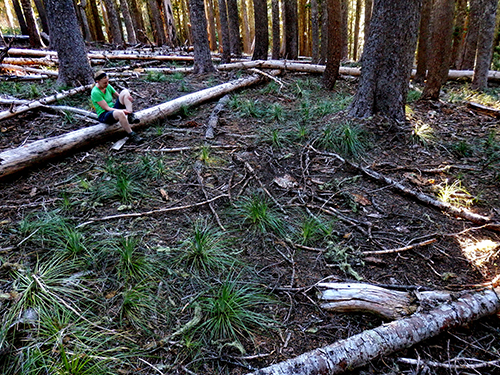
After you naturalize a remote campsite, it should look like this (like you were never there!).
Good or Bad Campsites?
Here are some examples of good and bad campsites to help you hone your campsite selection skills:
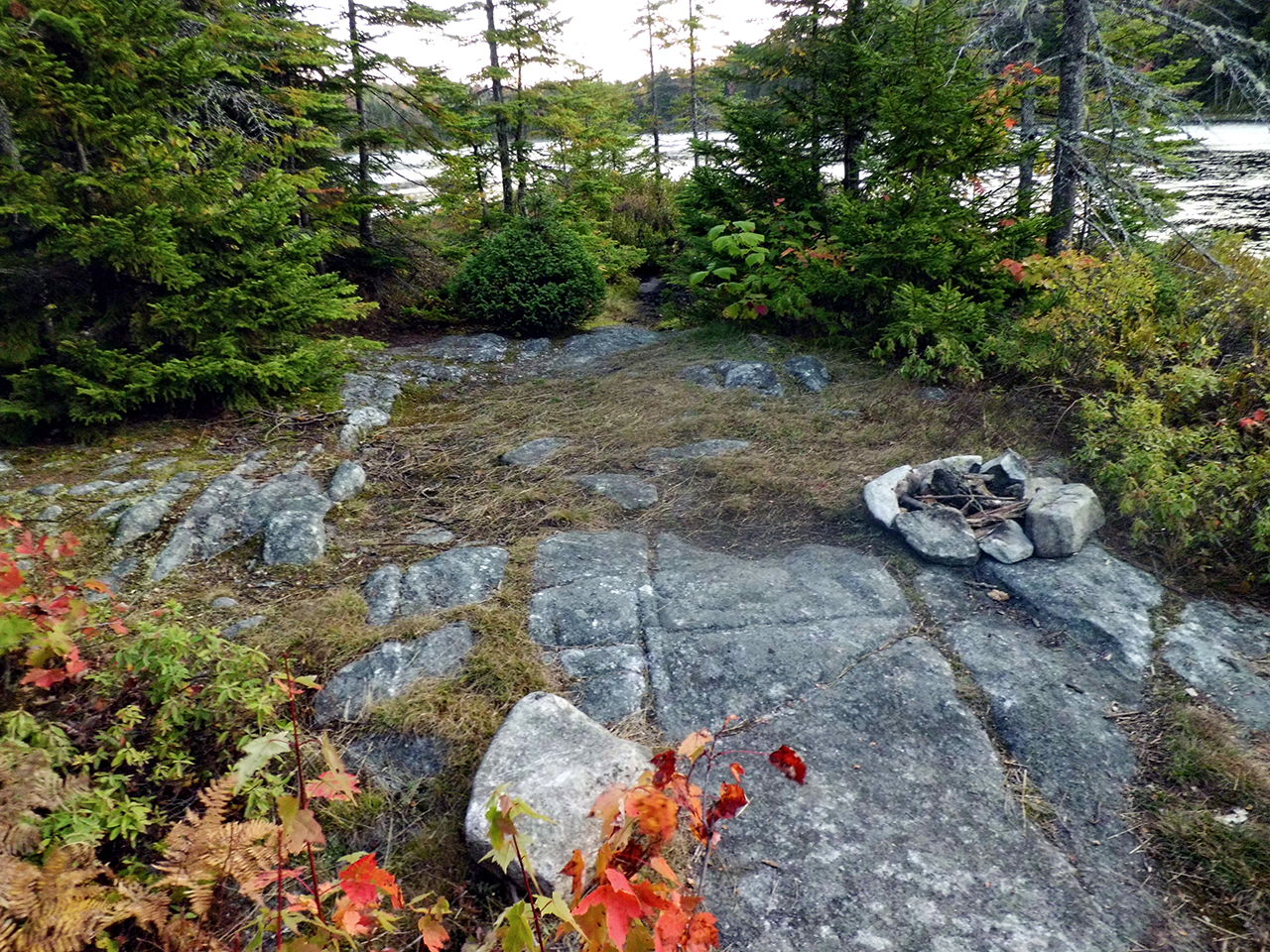
Although this site initially looks good since it has usable bedrock for cooking and sleeping, it has space for only one tent and is too close to the water. Under prolonged heavy use, especially by larger groups, this site would likely lose most of the surrounding vegetation, due to trampling by people, and expose soil that could erode into the lake. Additionally, the proximity to water increases the chances that the lake will become polluted by human waste and other contaminants, such as soap. Bad campsite choice.
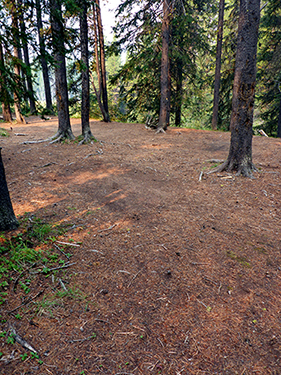
Enlarged sites can ultimately become megasites.
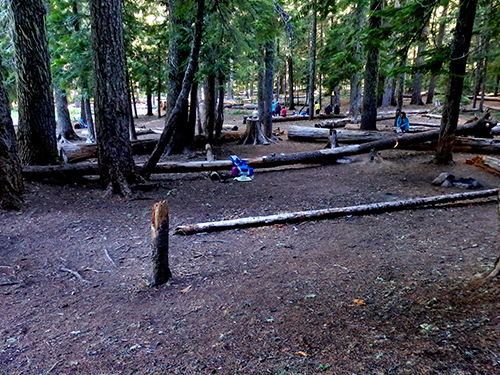
While the site shown in the left photo above could be an excellent campsite for a larger group, it is quite large and the flat terrain offers no resistance to the twin problems of more and bigger campsites. Many managers are now actively moving camping away from large flat areas to avoid the creation of crowded, noisy megasites or mega-clusters, as shown in the photo above on the right. Bad campsite choice.
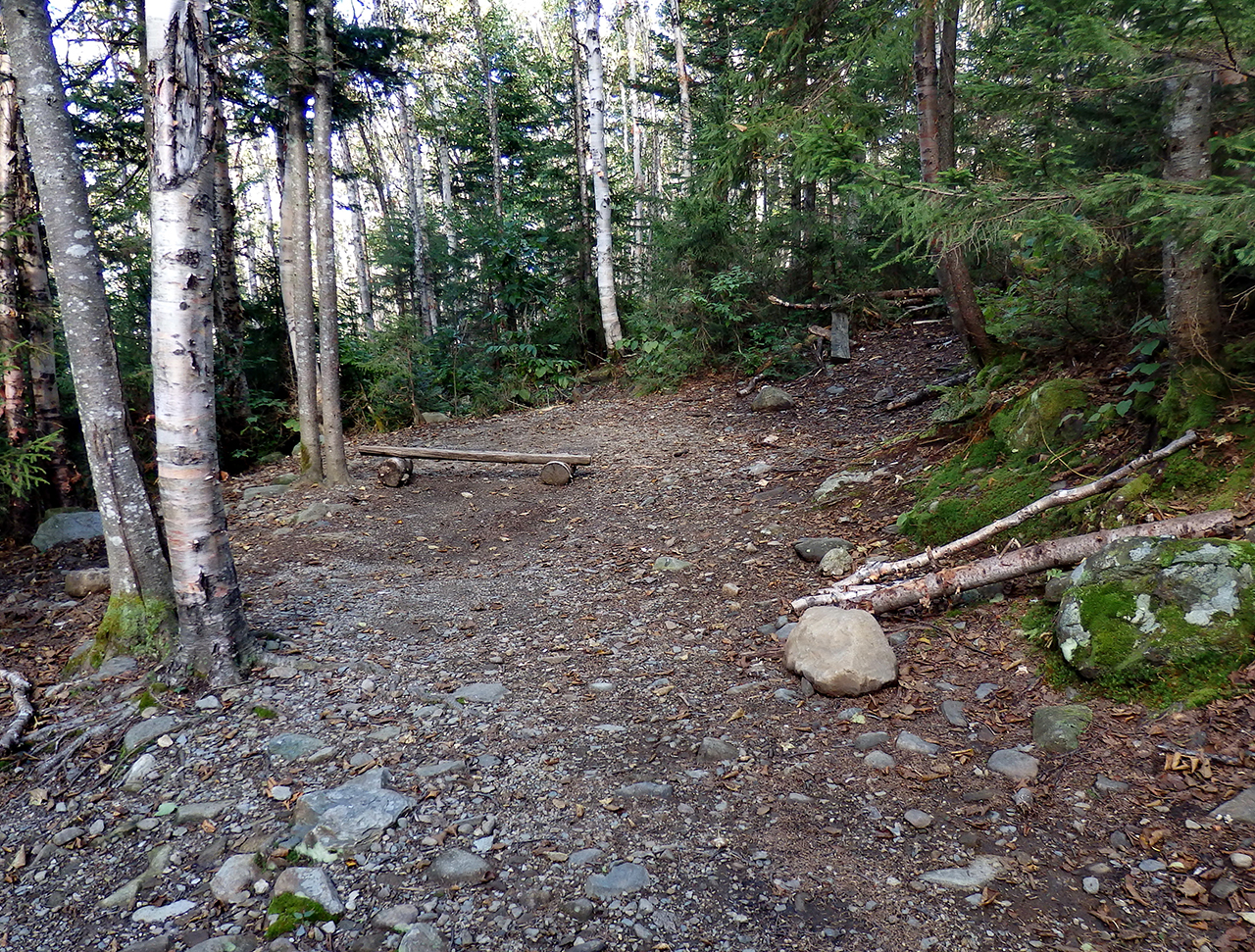
In this campsite, the surrounding slope concentrates activity on a small “footprint” site that can’t easily expand even under heavy longterm use. Additionally, the site provides a durable surface for camping and cooking. Good campsite choice.
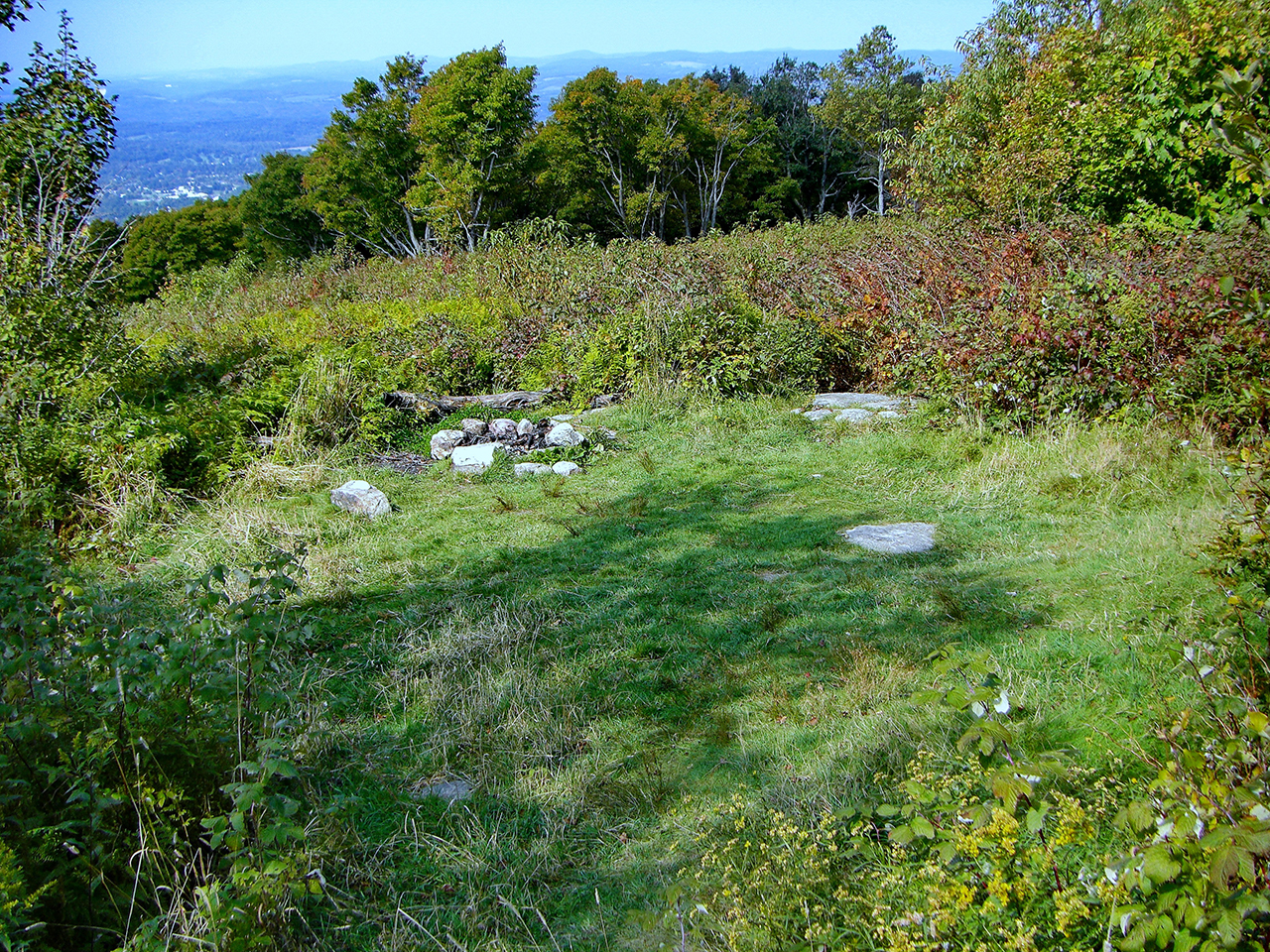
When camping on vegetation is necessary, impacts are best minimized by avoiding shady forested locations with leafy bushes and instead camping on sunny dry meadows with grass. The grassy types of vegetation in the sunny location shown here both resist and rapidly recover from trampling--being repeatedly stepped on by hikers' boots when walking, setting up a tent, and cooking. Good campsite choice.
How do we know that it's better to camp on grass than on leafy plants?
In an experiment, people walked back and forth 1000 times over leafy plants in the woods and grass in a sunny meadow to simulate lots of hikers. Not only did the grass fare better after being trampled, it grew back faster.
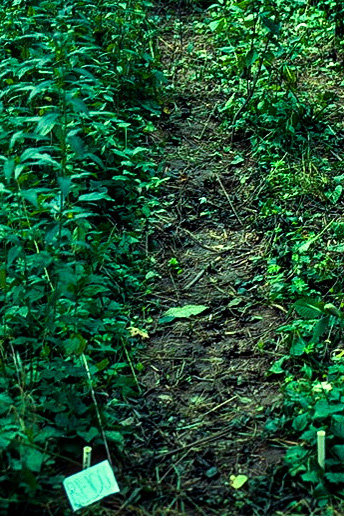
Trampled leafy plants
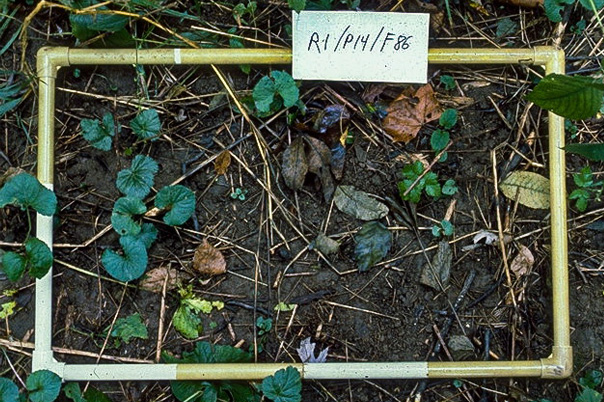
Leafy plants after 1 month of recovery time
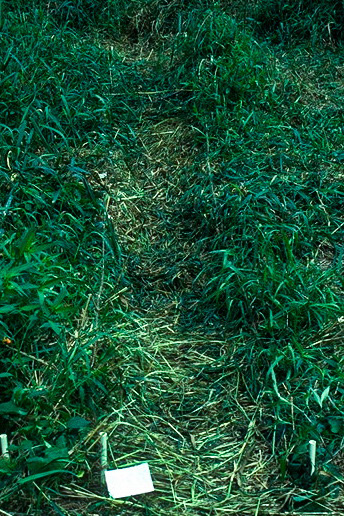
Trampled grass
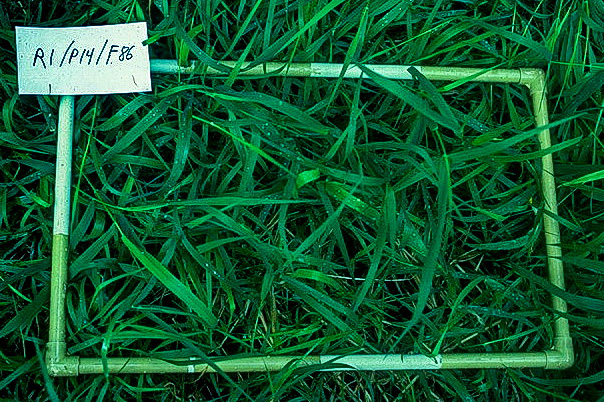
Grass after 1 month of recovery time
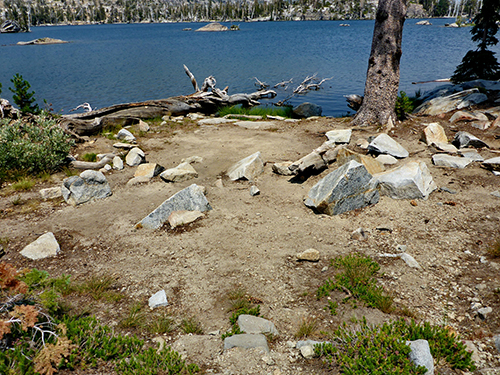
Managers of this illegal lakeshore campsite have repeatedly placed and partially buried rocks on it to discourage campers. Since this site is way too close to the alpine lake, the loosened soils drain directly into it during rainstorms, which pollutes the water. Bad campsite choice.
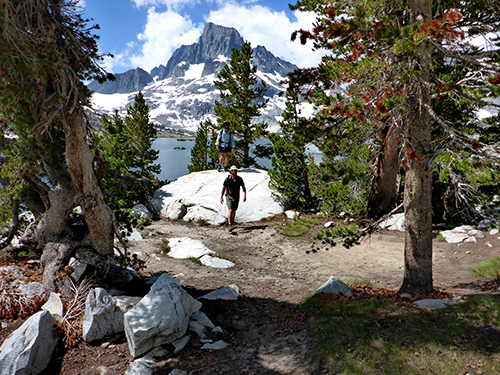
Visitors should continue to search further back from the lakeshore for sites that adhere to the 200 foot water setback and the other recommended guidelines, or plan ahead to allow time to hike to another area. At this particular lake, additional searching would be rewarded by this “hidden” highly sustainable campsite with a view! It’s located over 400 yards from the lake on a narrow but flat bench that most visitors don’t take the time to find. Good campsite choice.
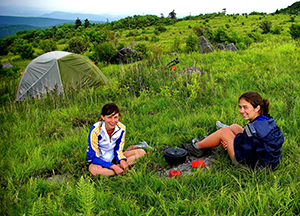
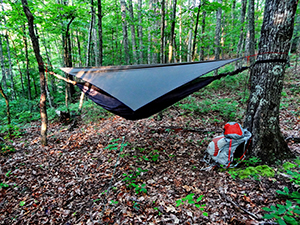
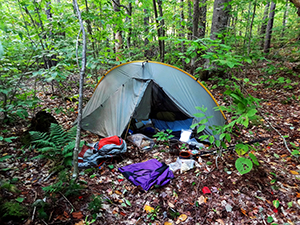
If you can’t or don’t have time to locate an existing campsite, consider asking others to share their large site or use the dispersed pristine site option described above. Find a grassy meadow or choose a heavily shaded forest site with space to camp on non-vegetated leaf litter. Just remember that it should be out-of-sight from existing trails and campsites and fully restored (naturalized) so that others will not find and reuse it. This will allow for the site to fully recover in a short timeframe. Good campsite choices.